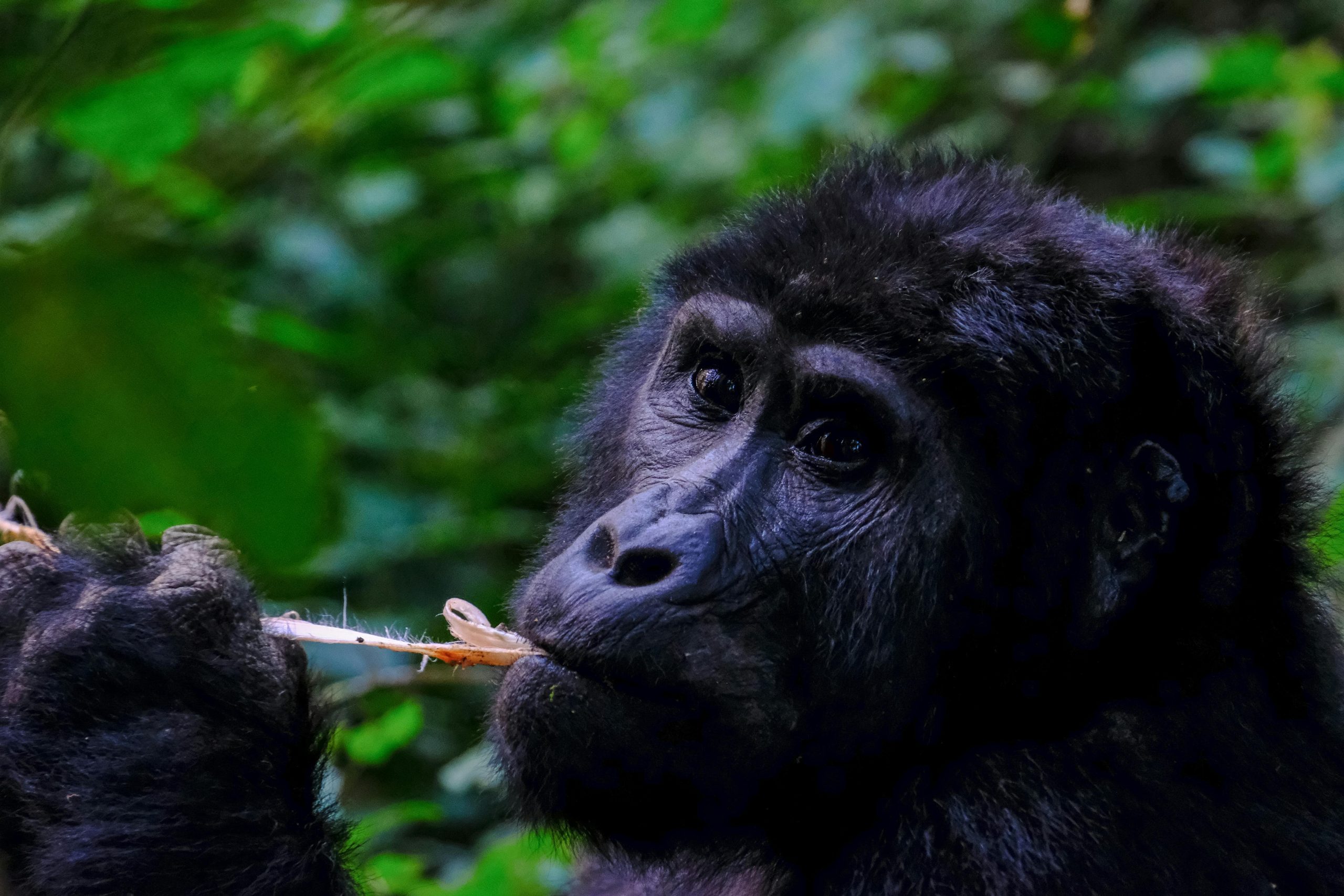The Congo Basin Rainforest, spanning across six countries in Central Africa—Cameroon, Central African Republic, Democratic Republic of Congo (DRC), Republic of Congo, Equatorial Guinea, and Gabon—is the second largest tropical rainforest in the world, after the Amazon. This vast expanse covers approximately 3.7 million square kilometers and is an essential hub for biodiversity, carbon storage, and climate regulation.
A Biodiversity Hotspot
The Congo Basin Rainforest is home to an incredible variety of plant and animal species, many of which are unique to this region. It harbors over 10,000 species of tropical plants, including medicinal plants and fruit trees that are essential for local communities. The forest also serves as the critical habitat for some of the world’s most iconic and endangered species, such as:
- Gorillas: The western lowland gorilla and eastern lowland gorilla are both found in the Congo Basin, with the Gorilla population in DRC facing the constant threat of poaching and habitat destruction.
- Forest Elephants: Smaller than their savannah relatives, the forest elephants of the Congo Basin are a keystone species, influencing the forest ecosystem through seed dispersal and vegetation control.
- Okapi: Related to the giraffe, the okapi is an elusive and rare animal that inhabits the forest floor of the Basin, relying on its dense environment for protection.
- Congo Basin Chimpanzees: These primates live throughout the rainforest and are a key species for ecosystem balance, playing important roles in seed dispersal and maintaining the forest’s health.
Birdwatchers will also find plenty of opportunities to observe rare species such as the African Grey Parrot, and a diverse range of reptiles, amphibians, and insects are present throughout the Basin.
Ecological Importance
The Congo Basin Rainforest is not only a biodiversity hotspot but also plays a critical role in global climate regulation. As one of the largest carbon sinks on the planet, it absorbs vast amounts of carbon dioxide from the atmosphere, helping to mitigate climate change. The forest’s dense vegetation stores carbon, while the waterways, like the Congo River, allow the ecosystem to thrive and sustain a variety of wildlife and plant life.
Additionally, the forest helps regulate rainfall patterns and local climates in the surrounding areas, impacting the agricultural cycles of many nations in Central Africa. The Congo Basin is also crucial for the livelihoods of millions of people, providing resources such as timber, fruits, and medicinal plants, as well as water through the Congo River, which is the second-longest river in Africa.
Exploring the Congo Basin Rainforest
For those interested in eco-tourism, the Congo Basin offers a unique and adventurous experience. Due to its remoteness, the region is often a challenging destination to reach, but for those who do, it provides an unparalleled opportunity to connect with one of the world’s most vital ecosystems.
- Wildlife Tours: Exploring the forest with local guides provides a chance to witness the diverse wildlife in their natural habitat. Forest safaris, which include trekking through the dense forest in search of gorillas or chimpanzees, offer a rare opportunity to witness these creatures in their natural environment. Wildlife enthusiasts can also participate in nocturnal safaris, where they can spot creatures such as bats, pottos, and civets that come alive after dark.
- Congo River Cruises: The Congo River provides a unique way to explore the Basin from the water. River cruises take travelers through isolated communities and pristine wilderness areas, with the chance to observe wildlife along the banks. These cruises also offer a chance to view the rainforest’s immense size and complexity, providing a fresh perspective on the region’s ecosystem.
- Forest Treks: For those looking to experience the rainforest up close, trekking through the Congo Basin offers an exciting, yet challenging, way to explore the region. Trails are often deep within the forest, where travelers may encounter towering trees, dense foliage, and diverse wildlife.
- Cultural Experiences: The Congo Basin is home to numerous indigenous tribes, such as the Pygmies, who have lived in the rainforest for centuries. Travelers can engage with local communities, learning about their traditional ways of life, hunting methods, and the sustainable use of forest resources. This cultural exchange provides valuable insight into how indigenous knowledge helps protect the forest and its biodiversity.
Conservation Challenges
Despite its importance, the Congo Basin faces significant threats. Deforestation, driven by illegal logging, agriculture, and mining, poses a serious risk to the ecosystem. The expansion of palm oil plantations, in particular, has led to the destruction of large swaths of rainforest. Additionally, poaching for wildlife trade and conflict have contributed to the decline in several species, including gorillas and elephants.
However, efforts are being made to protect and preserve the Congo Basin’s environment. Several international and local conservation programs are working to combat deforestation, poaching, and habitat destruction, focusing on sustainable land management, conservation education, and eco-tourism as means to protect the rainforest for future generations.
Best Time to Visit
The best time to visit the Congo Basin Rainforest largely depends on weather conditions and the type of experience you’re seeking. The dry season (from May to September) is ideal for wildlife viewing, as animals are more concentrated around water sources. During this time, the conditions are also better for trekking and river cruises.
Conclusion
The Congo Basin Rainforest is a remarkable natural wonder, brimming with biodiversity and ecological importance. Its role in regulating the global climate and sustaining local ecosystems cannot be overstated. While this unique region faces numerous challenges, efforts to preserve and protect it are crucial for the future of the rainforest and the people and species that depend on it. Whether you are seeking adventure, wildlife encounters, or cultural experiences, the Congo Basin offers a once-in-a-lifetime opportunity to explore one of the world’s most vital and awe-inspiring environments.

